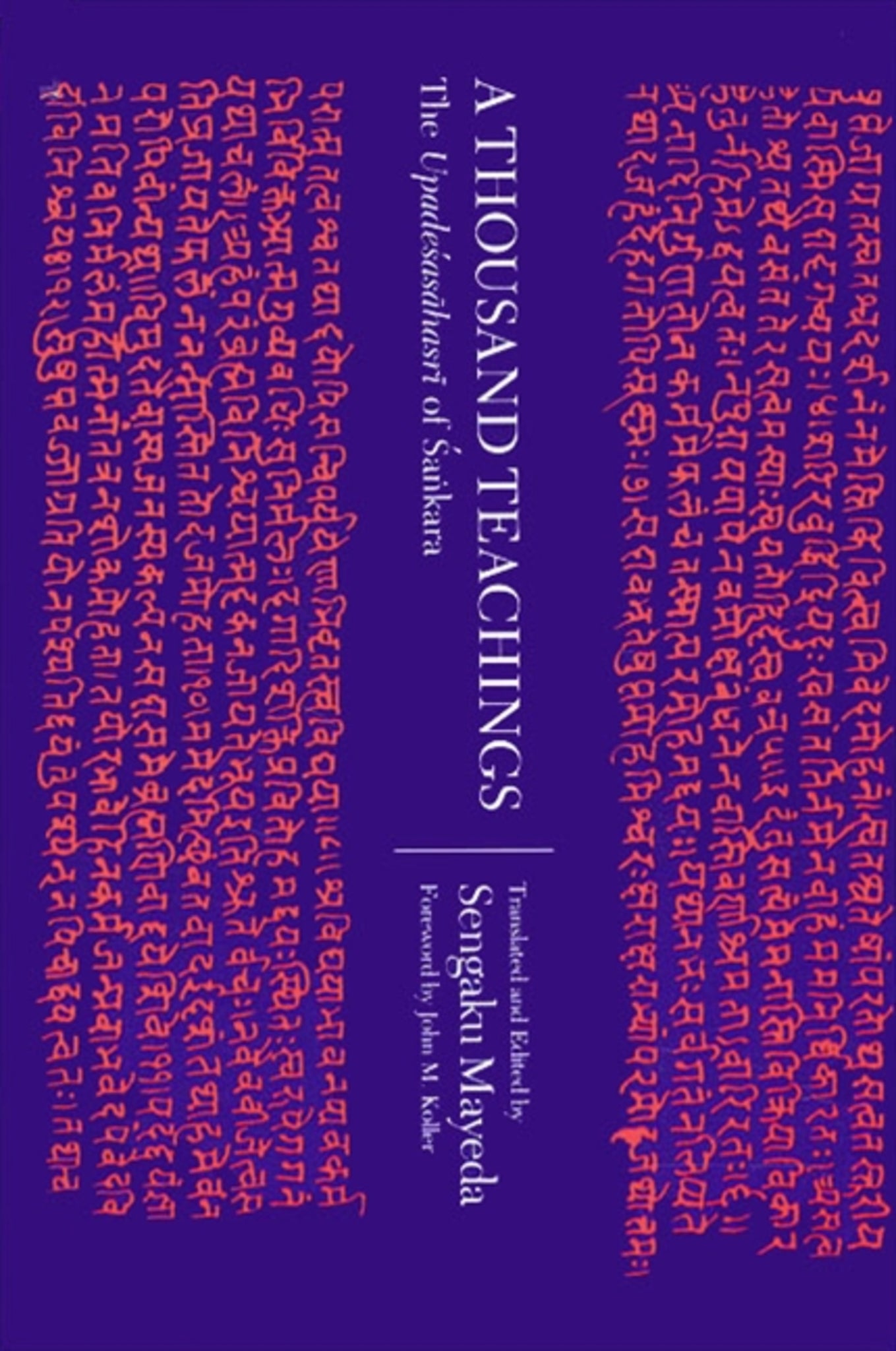We're sorry. An error has occurred
Please cancel or retry.
A Thousand Teachings

Some error occured while loading the Quick View. Please close the Quick View and try reloading the page.
Couldn't load pickup availability
- Format:
-
23 January 1992

This is the best introduction to Vedanta and to Śaṅkara's philosophy. The Upadeśasāhasrī, or A Thousand Teachings consists of a metrical part and a prose part. In the metrical part, Sankara discusses the basic philosophical problems of non-dualism, at the same time refuting the teachings of other philosophical schools. In the prose part, he explains how to teach the way to self realization—to enlightenment.
Śaṅkara and the great Abhinavagupta are generally regarded as the two greatest thinkers in the long history of Indian philosophy. Sankara represented Advaita Vedanta, a non-dualistic view of ultimate reality. Most of his works are commentaries on classics of Indian thought. A Thousand Teachings is the only non-commentarial work that can be attributed to him; the other independent writings ascribed to him are probably spurious.


FOREWORD
PREFACE
ABBREVIATIONS
An Introduction To The Life And Thought Of Sankara
I. The Life And Works Of Sankara
II. Sankara's Central Doctrine And His Position In The History Of The Vedanta
III. Atman's Identity With Brahman
A. Theological and Cosmological Approach
1. A Cosmological Proof of the IdentityB. Psychological and Epistemological Approach
2. Characteristics of Sankara's Cosmological View
3. Sankara's View of Gross Elements
1. Structure of the IndividualC. Exegetical Approach
2. Psychology of External Perception
3. Semantic Analysis of Perception
4. Psychology of Internal Perception
5. Four States of Atman
1. The Means of KnowledgeIV. Transmigration And Final Release
2. The Sentence "Tat Tvam Asi"
3. An Exegetical Method: Anvaya and Vyatireka
4. Later Advaitins' Exegetical Method
5. Discontinuance of Sankara's Method
6. The Sentence "Aham Brahmasmi"
A. Transmigration
B. Final Release
C. Transmigrator
D. Avidya
1. Nature of AvidyaE. The Means to Final Release
2. The Locus and the Object of Avidya
3. A Theoretical Defect in Avidya
F. Sankara's View of Ethics
A Thousand Teachings(Translation And Notes)
I. Metrical Part (Padyabandha)
1. Pure Consciousness (Caitanyaprakarana)
2. Negation (Pratisedhaprakarana)
3. The Lord (Isvaraprakarana)
4. "I"-notion (Ahampratyayaprakararia)
5. Suspicion of Urine (Mutrasaikaprakarana)
6. Having Cut (Chittvaprakarana)
7. Located in the Intellect (Buddhyarudhaprakarana)
8. The Nature of Pure Consciousness (Citisvarupaprakarana)
9. Subtlety (Suksmataprakarana)
10. Seeing (Drsiprakarana)
11. The Quality of Being the Beholder (Iksitrtvaprakarana)
12. In the Sunlight (Prakasasthaprakarana)
13. Eyelessness (Acaksustvaprakararana)
14. Dream and Memory (Svapnasmrtiprakarana)
15. One Thing Cannot Be Another (Nanyadanyatprakarana)
16. Consisting of Earth (Parthivaprakarana)
17. Right Thought (Samyanmatiprakarana)
18. Thou Art That (Tattvamasiprarkarana)
19. Annihilation of Fever (Jvaranasaprakarana)
II. Prose Part (Gadyabandha)
1. How to Enlighten the Pupil (Sisyapratibodhanaprakarana)
2. Awareness (Avagatiprakarana)
3. Parisamkhyana Meditation (Parisamkhyanaprakarana)
Index



